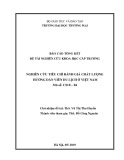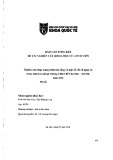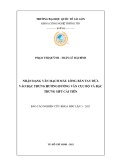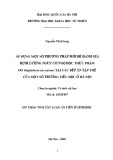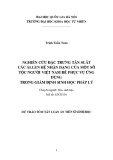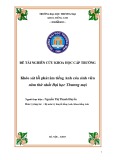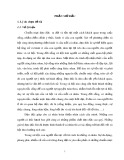
BioMed Central
Page 1 of 12
(page number not for citation purposes)
Genetics Selection Evolution
Open Access
Research
Genomic breeding value estimation using nonparametric additive
regression models
Jörn Bennewitz*1,2, Trygve Solberg1 and Theo Meuwissen1
Address: 1Department of Animal and Aquacultural Sciences, Norwegian University of Life Sciences, Box 1432, Ås, Norway and 2Institute of Animal
Breeding and Husbandry, Christian-Albrechts-University of Kiel, 24098 Kiel, Germany
Email: Jörn Bennewitz* - j.bennewitz@uni-hohenheim.de; Trygve Solberg - trygve.roger.solberg@umb.no;
Theo Meuwissen - theo.meuwissen@umb.no
* Corresponding author
Abstract
Genomic selection refers to the use of genomewide dense markers for breeding value estimation
and subsequently for selection. The main challenge of genomic breeding value estimation is the
estimation of many effects from a limited number of observations. Bayesian methods have been
proposed to successfully cope with these challenges. As an alternative class of models, non- and
semiparametric models were recently introduced. The present study investigated the ability of
nonparametric additive regression models to predict genomic breeding values. The genotypes were
modelled for each marker or pair of flanking markers (i.e. the predictors) separately. The
nonparametric functions for the predictors were estimated simultaneously using additive model
theory, applying a binomial kernel. The optimal degree of smoothing was determined by
bootstrapping. A mutation-drift-balance simulation was carried out. The breeding values of the last
generation (genotyped) was predicted using data from the next last generation (genotyped and
phenotyped). The results show moderate to high accuracies of the predicted breeding values. A
determination of predictor specific degree of smoothing increased the accuracy.
Introduction
Genomic selection refers to the use of genomewide dense
marker genotypes for breeding value estimation and sub-
sequently for selection. Genomic breeding value estima-
tion relies on linkage disequilibrium (LD) between
genetic markers and QTL and needs genomewide and
dense marker data. The main challenge is the estimation
of many effects from a limited number of observations. To
cope with this problem, Meuwissen et al. [1] proposed
Bayesian methods that used informative priors. Meuwis-
sen et al. [1] and Solberg et al. [2] showed by means of
simulations that these methods are able to estimate
genomic breeding values with a remarkably high accuracy,
even for individuals without own phenotypic observa-
tions. This offers the opportunity to speed up genetic gain
by reducing the need for progeny testing [3].
Gianola et al. [4] argued that the assumptions made in the
Bayesian models of Meuwissen et al. [1] are rather strong
(e.g. the priors are very informative) and introduced non-
parametric and semiparametric models, which make
fewer assumptions. Two ways of modelling the genotypic
data are presented by these authors. The first models all
genotypes of an individual across the genome simultane-
ously; see eq. (1) of Gianola et al. [4]. Subsequently, the
non- or semiparametric estimate includes additive genetic
effects as well as dominance and epistasis. From this total
genomic value, an additive breeding value can be
Published: 27 January 2009
Genetics Selection Evolution 2009, 41:20 doi:10.1186/1297-9686-41-20
Received: 17 December 2008
Accepted: 27 January 2009
This article is available from: http://www.gsejournal.org/content/41/1/20
© 2009 Bennewitz et al; licensee BioMed Central Ltd.
This is an Open Access article distributed under the terms of the Creative Commons Attribution License (http://creativecommons.org/licenses/by/2.0),
which permits unrestricted use, distribution, and reproduction in any medium, provided the original work is properly cited.








